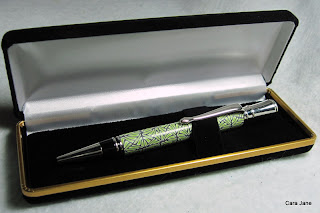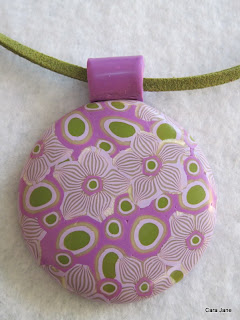So in
part 1 I discovered that for optimum strength you should turn your oven off at the end of the baking cycle and leave your polymer clay pieces to cool down slowly in the cooling oven. This was just an initial test to see if the set up was going to work before I made lots of samples with more complicated curing, and something I had always been curious about. I was happy that the test worked and set about making more samples (got a blister from the extruder - am thinking it might be time to look at those walnut hollow ones....).
For these tests I chose to cool all my samples at room temperature, although I knew they would be stronger if I let them cool slowly. It was easier to control the curing, meaning I didn't have to reheat the oven for each curing and also the testing would be quicker if the specimens weren't as strong There will be a third round of tests where I search for the real optimum curing based on what I have learnt so far. As before samples are all made from very well conditioned scrap Kato polymer clay. They are extruded cylinders and are approximately 10 cm long and 6mm in diameter. You may note, looking at the results below, that I only repeated each test twice this time. I made three samples each time but as the results were reasonably close and there were a lot to test I decided that two was enough! I haven't got round to polishing the samples yet, to see how shine is affected by cure time/temp - that's a job for another day!
Cure time tests
I tried curing samples for different amounts of time. The temperature for all the samples was 150°C and they were removed from the oven at the end of their cure time to cool at room temperature. The samples cured for 40 min had some longitudinal cracks on them when they were removed from the oven, however there was no sign of the cracks when they had cooled.
Cure time results
10 min -breaking point weight - 501g, 481g
20 min - 2035g*, 1986g*
40 min - 1900g*, 1935g*
*weight of water when specimen bent out of jig.
The weights given for the 20 and 40 min cure samples are not particularly relevant as these samples didn't break, they curved so much they slipped through the test rig. You can see this happening and the test set up in the video below.
Video showing the test set up and how the strong samples bent and slipped out of test jig.
 |
| Just managed to photograph this specimen as it started slipping through - see how bent it is! |
Having looked at the samples I conclude that for 6mm thick pieces 20 minutes curing is sufficient for strength and perhaps 40 min is too much due to the presence of the cracks on the warm sample, although this wasn't proved to make them weaker.
Oven temperature tests
All samples had 10 min in the oven at a set temperature that was verified with an oven thermometer, they were then removed and cooled at room temperature.
Oven temp results
140°C (~280F)- breaking point weight -440g, 380g
150°C (~300F) - breaking point weight -501g, 481g
160°C (~320F)- breaking point weight -1076g, 900g
170°C (~338F)- breaking point weight -1567g, 1498g
As you can see that change from 150°C to 160°C and again to 170°C makes a significant increase in strength!
Here's a video of a 140°C sample so you can see how little it flexed before breaking, compared to the 150°C for 20 min sample in the video above.
Video showing a test where the 140°C for 10 min cure specimen breaks without much bend
In a recent post on the
Kato facebook page (31st March if you want to look back and find it, can't find a way to make a direct link to that post) Tony Aquino, the technical director at Van Aken, who manufacture Kato polyclay, discussed curing temperatures (great timing thank you Tony!). He said that higher temperature of curing would mean stronger clay, my tests show this too.
Conclusion of my experiments so far
Increasing the cure temperature increased the strength of the sample significantly but the samples still all broke. Increasing the cure time meant that the samples were much stronger and held about 2kg, or 2 litres of water before they bent so much they slipped through the test jig. That may be to do with the increased time allowing the temperature in centre of the specimen to reach the correct temperature or some other factor, I'm not sure.
I would like to do some more tests looking at cure time against thickness of specimen so that I would know the ideal time for all thickness of clay. Next time I am bored I guess!
I will cure my next specimens at 160oC (320F) for 20 min, and leave them to cool in the oven as it cools down. This would seem to be the best way to cure 6mm thick Kato Polyclay for optimum strength. I will test this and let you know the results.
This blog will soon be finding a new home, I do hope you'll move with me - I'll keep you posted
Have fun with your polymer clay
Cara





































































